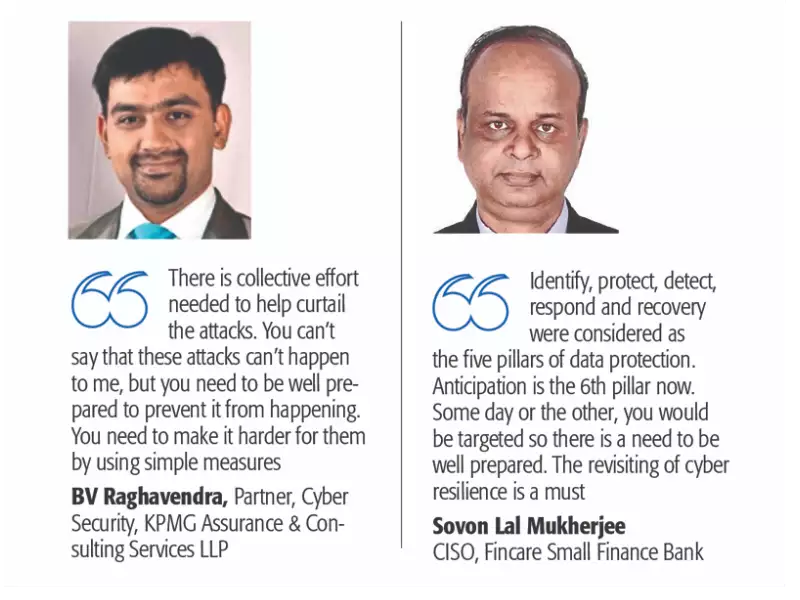Secure Complete Data Privacy And Best Practices Discussed

According to LinkedIn's report on Jobs on the Rise, a "full-stack engineer" is among the top emerging jobs. As technology evolves rapidly, full-stack developers are an asset to any organization. According to statistics, the demand for full-stack developers has increased by 35% annually. According to another report from the US Bureau of Labor Statistics, the demand for full-stack developers is expected to grow, projecting an 8% increase in employment for software developers between 2020 and 2030. Yet, the real issue of all tech titans is data privacy, 68 data records are lost every second and the average cost of a data breach is $3.92 million.
Why is Data Privacy Important for Full-Stack Developers?
Data privacy is very important for full-stack developers as they are in charge of creating and implementing software that manages sensitive customer data. Data privacy is important for full-stack developers because it ensures legal compliance, protects user data, preserves reputation and trust, and respects ethical considerations. Here are some specific reasons why data privacy is important in full-stack development:- User data protection: Full-stack developers are responsible for protecting sensitive user data, including personal information, financial data, and login credentials, from unauthorized access or misuse. This is essential for maintaining user privacy and security.
- Compliance with regulations: Many countries have data protection laws requiring organizations to protect user data. Full-stack developers must ensure that their software complies with these laws and regulations.
- Mitigating security risks: Full-stack developers must consider potential security risks and vulnerabilities throughout development. By adopting adequate security measures, developers can reduce the danger of data breaches or cyber-attacks that compromise user data.
- Building trust: Users will likely trust software and applications prioritizing data privacy. Full-stack developers must ensure their software is secure and user data is protected to build and maintain user trust.
- Protecting company reputation: A data breach or security incident can damage a company's reputation and lead to loss of business. Full-stack developers must ensure that the software they develop is secure and that user data is protected to avoid negative publicity and loss of business.

Challenges in maintaining Data Privacy
Maintaining data privacy is becoming increasingly important as more personal information is being collected and stored digitally. There are several challenges in maintaining data privacy, including:
-
Cyberattacks: Hackers and cybercriminals are stealing personal information from databases or through phishing scams, putting data privacy at risk. Example - The famous data breach of LinkedIn in 2021, where the data of 700 million LinkedIn users was posted for sale in a Dark Web forum.
-
Third-party sharing: Many companies collect and share personal data with third-party vendors, which can increase the risk of data breaches and unauthorized access to personal information.
-
Lack of transparency: Some companies are not transparent about how they collect, use, and share personal data, making it difficult for individuals to know what information is being collected and who has access to it.
-
Data storage: Data is often stored in multiple locations, making it difficult to ensure that all copies of the data are secure and protected. Example - Hackers used Fortra zero-day to steal sales data from cloud management giant Rubrik
-
Inadequate security measures: Companies may not have sufficient security measures in place to protect against data breaches or may not update their security measures to keep up with evolving threats.
-
Employee negligence: Employees may accidentally or intentionally disclose sensitive information, either through carelessness or malicious intent.
-
Legal and regulatory compliance: Companies may face legal and regulatory challenges in maintaining data privacy, particularly if they operate in multiple jurisdictions with different data protection laws.
-
Lack of awareness and education: Many individuals may not be aware of the risks associated with sharing personal data online or may not know how to protect their data privacy. This can make them more vulnerable to cyber threats and data breaches.
Understand Full-Stack Development and its Impact on Data Privacy
Full-stack development is the process of building web applications that include three main layers: the front end, the back end, and the database layer. Each layer in full-stack development can impact data privacy in different ways. Here's an overview of how each layer can impact data privacy:
Front-end layer - The front-end layer, also known as the client side, is responsible for the web application's user interface and user experience. This layer includes the application's design, layout, and functionality that users interact with directly. Common front-end technologies include HTML, CSS, and JavaScript frameworks such as React and angular.
Back-end layer - The back-end layer is responsible for data processing and storage, making it critical for data privacy. If not designed with data privacy, it can expose vulnerabilities like injection attacks and data breaches. Unsecured back-end layers can allow attackers to steal user data from the database. Inappropriate handling of user data can lead to data leakage or misuse.
Database layer - The database layer plays a crucial role in data storage and management, making it critical for data privacy. Poorly designed database layers can result in vulnerabilities like SQL injection attacks and data breaches. Unsecured database layers can lead to unauthorized access by attackers who can steal user data. Inappropriate database schema design can lead to data leakage or misuse.
You may also like The Ultimate Guide to Become A Full Stack Developer in 2023
How can Data Privacy be Implemented in Full-Stack Development?
Data privacy is a critical consideration in full-stack development. It helps to protect the confidentiality, integrity, and availability of user data. Data privacy should be considered throughout the entire development process, from design to deployment. Security measures should be implemented at each layer of the application, including the client side, server side, and database. It is also essential to conduct regular security audits and risk assessments to identify and mitigate vulnerabilities.
To implement data privacy in full-stack development, the following steps can be taken:
-
Use secure authentication and authorization protocols to control access to sensitive data.
-
Implement encryption techniques to protect sensitive data while it is in transit and at rest.
-
Regularly update software and use security best practices to reduce the risk of cyberattacks.
-
Implement access controls and monitoring mechanisms to identify suspicious activity or unauthorized access to sensitive data.
-
Comply with data privacy regulations such as GDPR, CCPA, and HIPAA to ensure that data is collected, stored, and processed in a secure and compliant manner.

source
The Best Practices for Each Layer in Full Stack Development
Full-stack development involves working with multiple layers of technology to create a functional and efficient web application. Here are some best practices for each layer in full-stack development:
Front-end development
-
Use responsive design for different screen sizes and devices.
-
Optimize the website for fast loading and fewer HTTP requests.
-
Create accessible and readable code using semantic HTML, structured CSS, and accessible JavaScript.
-
Ensure cross-browser compatibility and accessibility compliance.
-
Consider using a JavaScript framework like React, Angular, or Vue for complex user interfaces.
Back-end development
-
Use a framework like Node.js, Django, or Ruby on Rails for rapid development and scalability.
-
Use RESTful APIs to provide a standardized interface for communication between the front-end and back-end.
-
Use efficient algorithms and data structures to handle large amounts of data.
-
Ensure data security by implementing authentication and authorization mechanisms.
-
Use logging and monitoring tools to detect and fix issues before they become serious.
Database management
-
Use a relational database management system (RDBMS) like MySQL or PostgreSQL for complex applications that require robust data modeling and transaction management.
-
Use a NoSQL database like MongoDB for simpler applications that require fast and scalable data storage and retrieval.
-
Use indexing and caching techniques to optimize database queries and reduce response times.
-
Ensure data privacy and protection by encrypting sensitive data.
Explanation of tools and frameworks that can help developers protect user data
Protecting user data is a critical aspect of software development, and there are several tools and frameworks available to help developers ensure that personal data is secure and protected. Here are some of the key tools and frameworks that developers can use to protect user data:
- Encryption tools - Encryption tools can be used to protect sensitive data, such as passwords, credit card details, and personal identification information, from unauthorized access or theft. Some popular encryption tools include OpenSSL, GnuPG, and AES encryption.
- Authentication and authorization frameworks - Authentication and authorization frameworks can assist developers in ensuring that sensitive data is only accessible to authorized users. OAuth, OpenID, and JWT are some prominent authentication and authorization frameworks.
- Data masking tools - Data masking tools can help developers protect sensitive data by replacing real data with fictitious data in test and development environments. Some popular data masking tools include Delphix and Informatica.
- Data loss prevention (DLP) tools - DLP tools can help developers prevent data loss by monitoring and controlling the flow of data within an organization. Some popular DLP tools include Symantec DLP and McAfee DLP.
- Security testing tools - Security testing tools can help developers identify and address application vulnerabilities that attackers could exploit to access user data. Some popular security testing tools include Burp Suite, OWASP ZAP, and Nessus.
- Compliance frameworks - Compliance frameworks, such as GDPR, HIPAA, and PCI DSS, provide guidelines and requirements for protecting user data in specific industries or regions. Developers can use these frameworks as a reference to ensure that their applications meet relevant compliance requirements.
Conclusion
Data privacy will further worsen while numerous gigabytes of private information are dispersed across on-site, cloud, hybrid, and third-party systems. By 2026, the market for data protection will rise to $18.96 billion.
The bottom line here is, there cannot be a better time than the present to become a full-stack developer and be in demand for years to come! Our next batch for full stack software development is starting from 30th April 2023! Join our Full Stack Developer Course today!